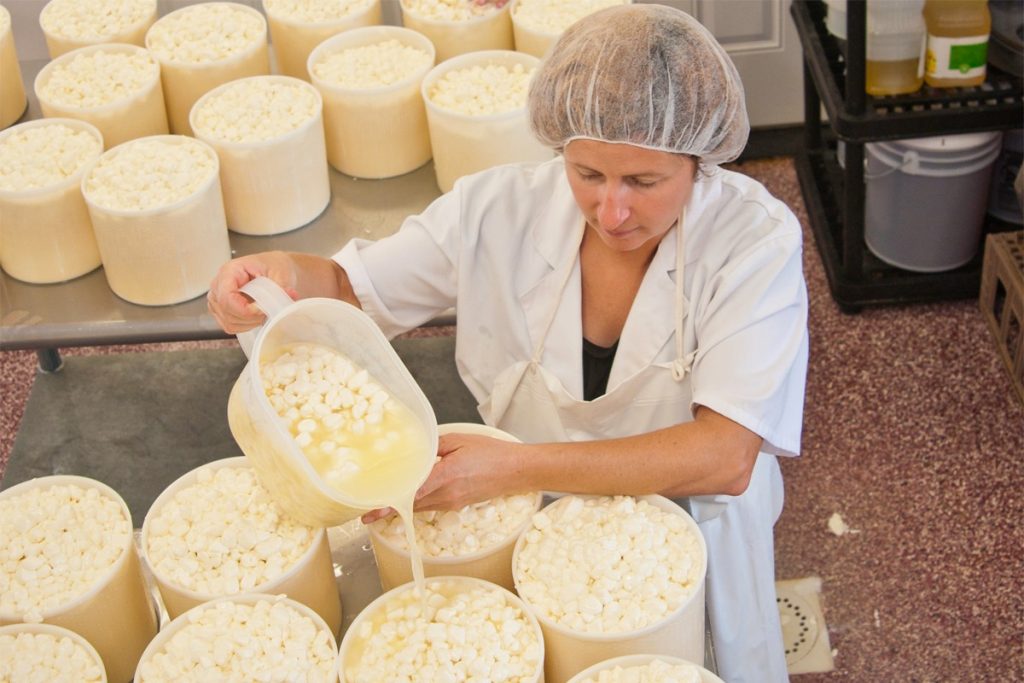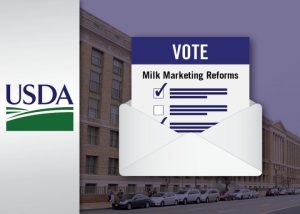Unlike oil, we probably won’t ever run out of milk. But the two liquids have one thing in common: They’re trading at record highs.
Milk prices are rising for reasons that include growing appetites for dairy foods in China and elsewhere in Asia, where chains such as McDonald’s and Starbucks are introducing unfamiliar taste buds to cheeseburgers and lattes.
Also adding to the price are rising costs for animal feed, shrinking European stocks and droughts in Oceania, the world’s largest milk exporting region.
Paying more for milk, a source of nutrients like calcium, is causing uproar in Germany and other countries where many families consider providing children with an affordable glass of milk a fundamental right.
Prices are likely to remain high until dairy farmers add more cows or shift production to powders, more easily traded than the liquid stuff.
Milk prices in the United States hit a record in July, according to the U.S. Department of Agriculture. It forecasts prices will remain high throughout the year.
International dairy product prices increased 46 percent between November 2006 and April 2007, with milk powder prices increasing even faster, according to the U.N. Food and Agriculture Organization.
Companies like candy giant Hershey Co. that use dairy for their products are feeling the pinch. But in many parts of the globe, dairy farmers are cheering.
“Global demand has been extraordinary for American dairy products, but global supplies of dairy products have been exceptionally tight,”’ said Michael Marsh, head of the Western United Dairyman trade group in California, the top dairy-producing U.S. state.
“`From the American dairy farmers’ perspective, you have almost a perfect storm.”’
In China, milk consumption has soared along with rising incomes, a massive expansion of the dairy industry, and the increasing familiarity with _ and taste for _ nonnative foods among young urbanites.
Pizza Hut sells its cheese-laden pies even in smaller cities, and milk, yogurt and individually packaged cheese slices can be found in small local supermarket chains. Foreign-owned stores such as France’s Carrefour, Germany’s Metro and Wal-Mart of the U.S. cater to slightly more sophisticated tastes, selling crumbly blue cheeses, wheels of gouda and red-waxed balls of Edam.
Products from Chinese dairy giant Mengniu even carry the label of being the official milk of the Chinese space program. Its drinks promise to “fortify the Chinese people,” with packaging showing a space-suited boy clutching a glass of creamy goodness.
The Dairy Association of China estimates consumption will rise by 15-20 percent annually in coming years.
Premier Wen Jiabao, on a visit to a dairy farm last year, said his “dream” is for each Chinese child to consume half a liter (a pint) per day. He is boosting production to try to keep up with demand _ but the world’s most populous nation remains a net importer of dairy products including milk powders.
The boom in biofuels is also pushing up corn prices and, as a consequence, making animal feed more expensive. Farmers have responded by raising milk prices.
Corn futures indicate that the price of corn will remain high this year, according to the Washington-based International Dairy Foods Association. Prices have also risen for soybeans, another feed crop, the association said.
The impact on the price of a carton of milk differs across the globe because dairy markets vary significantly from region to region, skewed by domestic and trade policies and other factors such as geography.
Governments in United States, Canada, the European Union, and Japan have a range of policies including tariffs and quotas which insulate their milk from international prices, according to the FAO.
These systems are under strain, as high rewards in the globalized market are inspiring milk producers to challenge the old practices.
In Germany, where milk prices are set annually after negotiations between producers and powerful retailers such as Aldi, Lidli and Edeka, David took on Goliath and won.
Retailers have been holding prices down to the tune of almost 15 percent since 2002. Since July, they have been paying producers an extra seven to 10 euro cents (five to seven U.S. cents) per liter after the producers threatened to take their milk elsewhere.
Since May, the price for a 250-gram packet of butter has gone up from 77 euro cents to 82 euro cents (from US$1.06 to US$1.13 for half a pound of butter) in Germany, while the price for a 1 liter of milk has increased from 58 euro cents to 66 euro cents (from US$3.20 to US$3.60 for one gallon of milk).
In a country where beer is still cheaper than milk, higher prices for dairy products have led to a flurry of condemnation.
The HDE retail association blames the Chinese and European Union milk quotas. The quota system, imposed since 1984, prevents farmers from producing more to keep up with demand.
The quota system will come to an end in 2015. In the meantime, EU spokesman Philip Tod said the EU Commission is allowing small – 0.5 per cent – annual increases in quotas through 2008.
Hershey Co. CEO Richard H. Lenny said America’s largest candy maker may adjust its formula to use less lactose because of rising milk costs. Candy bar prices will also be reviewed, he said.
Franck Riboud, head of French yogurt maker Groupe Danone SA, said last month he will raise the price of dairy products in France by 2.5 percent, the first rise in two years, to help compensate for the increase in prices.
















